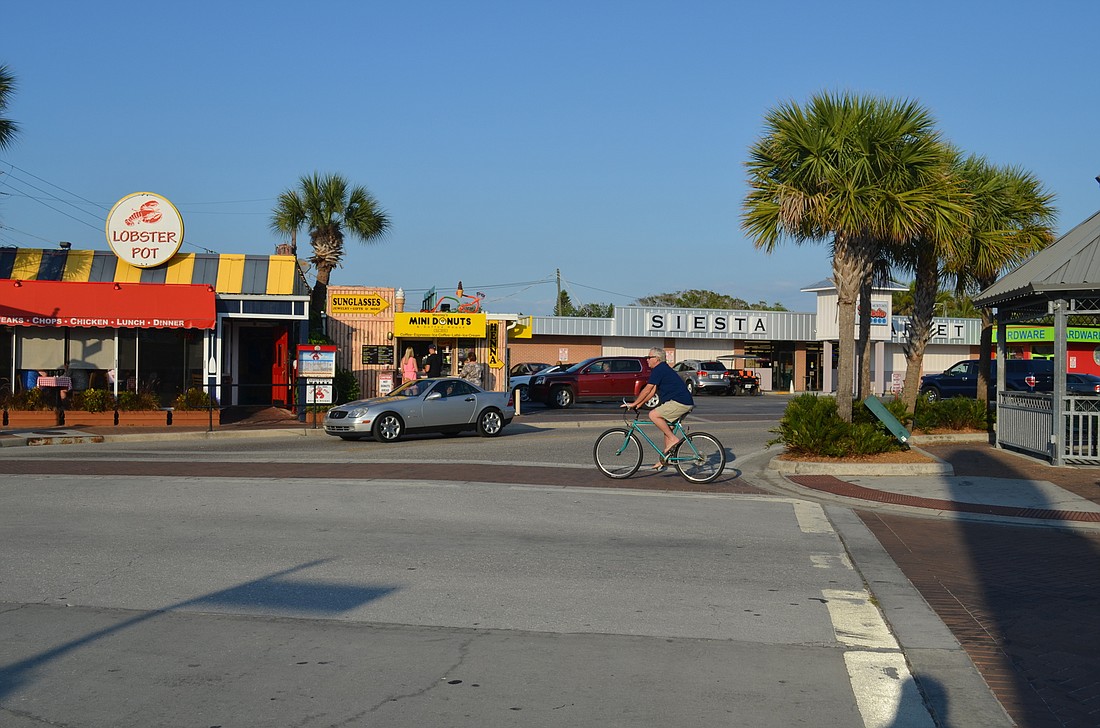- November 24, 2024
-
-
Loading

Loading

If you have any doubts about Harold Ashby’s devotion to cycling, just check his license plate.
Not only did the Siesta Key resident opt for a design that helps fund the state “Share the Road” cycling campaign, he also capitalized on the surprising availability of an almost-jarringly straightforward vanity plate: “BIKE.”
And yet, the man with “BIKE” on the back of his car isn’t always pleased to see other riders on Siesta Key. The number of cyclists on the island has grown since Ashby moved to the area a decade ago. In general, he believes that’s good, but the increased popularity comes with its own challenges.
“The thing I noticed early on is there were just a lot of bikers on Siesta Key who were not riding safely,” Ashby said. “They were riding on the wrong side of the road; the children weren’t wearing helmets.”
He attributed the issues to the large tourist population on Siesta. People coming from out of town might rent a bike to get around, but that doesn’t mean they would research the rules of the road. After observing the phenomenon long enough, Ashby decided he needed to take some action.
In January, he attended a Siesta Key Association meeting to share his thoughts. He wanted to work with the resident group to raise awareness of bike safety guidelines. It wasn’t an issue SKA had given a lot of attention, but the organization was quick to buy in.
“It ties into their mission, which focuses on things like relieving traffic and addressing parking issues and things like that,” Ashby said. “So they signed me up.”
Partnering with residents Gene Kusekoski and Jean Kirshenbaum, the group has already distributed fact sheets with safety tips to condo buildings and rental properties. They’ve got even grander plans for the next few months, as they work on creating a map of Siesta Key with suggested routes featuring bike-friendly streets.
The goal is to place those maps in businesses on the Key so interested visitors can get educated quickly. Bike rental businesses have grown significantly over the past six years or so, according to SKA board member Catherine Luckner, who thinks that is compounding the safety problems.
“Many people don’t know the roads they’re on, don’t know other ways to get places,” Luckner said. “It does make it more dangerous.”
William Scott, the owner of Siesta Key Bike & Kayak, confirmed a recent uptick in interest. Although the service offers safety equipment and maps, renters are usually more curious about routes to beaches than they are with the conditions of Siesta streets. Scott doesn’t see the market slowing down soon.
“It’s a popular way to get around, especially with the bumper to bumper traffic nowadays,” he said.
“Many people don’t know the roads they’re on, don’t know other ways to get places.” — Catherine Luckner
Ashby says it’s particularly important to raise awareness of safety issues specific to Siesta. The biggest one might be Midnight Pass Road, where a speed limit of 40 mph and a series of entrances and exits from residential neighborhoods means riders should be keenly aware of their surroundings on the street.
He’s got long-term aspirations for his advocacy, too. Eventually, he wants to see Siesta turn into a “bicycle-friendly community,” which is an official designation conferred by the League of American Bicyclists.
Things like adding bike lanes would require a significant investment, but if work can slowly accumulate over time, he believes it would have benefits for more than just cyclists.
“That’s part of the solution to getting the traffic off the roads, to people not hunting for parking solutions,” Ashby said. “There’s no more land to park cars, and you can’t build any more roads.”
Residents have had preliminary discussions with county officials, but neither side wants to get too far ahead of itself. Patrick Lui, the county bicycle and pedestrian coordinator, confirmed that bike-friendly improvements would pose a challenge in a well-developed area like Siesta Key. Because of that, he believes the safety awareness campaign is well tailored to the island.
“There’s no more land to park cars, and you can’t build any more roads.” — Harold Ashby
“Once you have those physical limitations to building infrastructure, you’re looking at education and awareness,” Lui said. “Things like sharing the road with cars, being aware of each other — that’s the next step.”
For now, Ashby and his partners are focused on those safety concerns, highlighting big-picture issues they believe should be of grave importance to cyclists.
“We’re not out to scold the cars for not respecting bicycles; we’re not out to scold the bicycles for a rolling stop sign, because that’s not what gets people killed,” Ashby said. “What gets people killed is not being aware of their surroundings, riding on dangerous road surfaces or mixing it up with cars.”